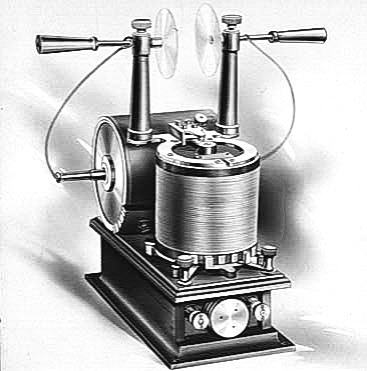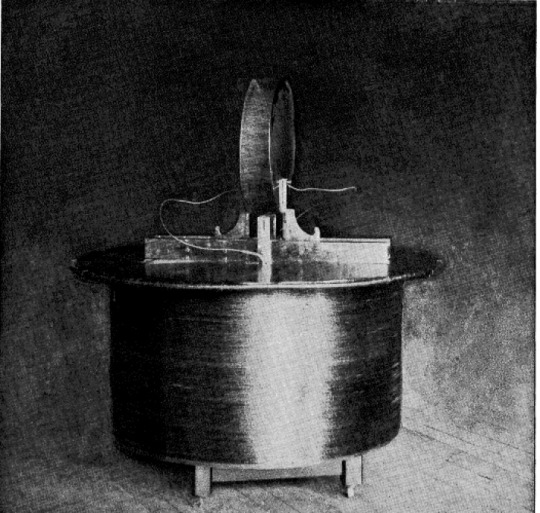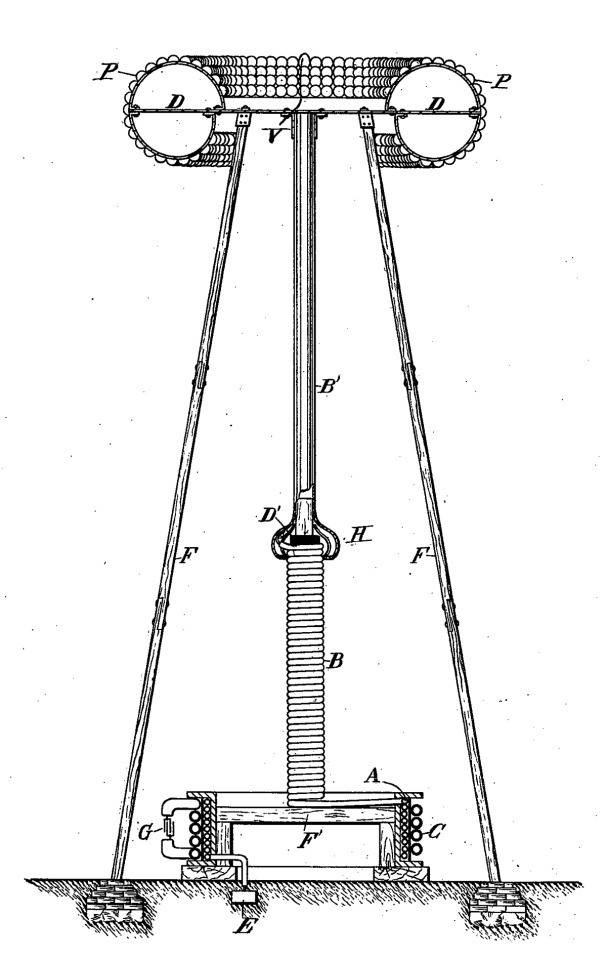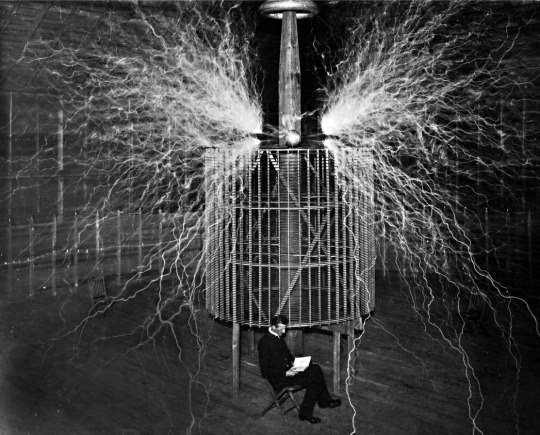#high-frequency applications
Explore tagged Tumblr posts
Text
Understanding the Growing Applications of LTCC and HTCC in Automotive Sector
With the growth and usage of power devices, particularly 3rd-generation semiconductors, semiconductor devices are progressively evolving in the path of miniaturization, high power, multi-function, and integration, which also put forward greater needs on the performance of packaging substrates. Ceramic substrates possess good heat resistance, high thermal conductivity, low coefficient of thermal…

View On WordPress
#component integration#electronic packaging#high-frequency applications#high-performance solutions#HTCC#LTCC#market analysis#Market dynamics#miniaturization#regulatory landscape
0 notes
Text
https://www.futureelectronics.com/p/semiconductors--discretes--transistors--bipolar-transistors/njvmjd31ct4g-onsemi-6177237
Switching applications, Bipolar transistor circuits, bipolar junction transistors
MJD31 Series 100 V 3 A 1.56 W Complementary Power Transistor - DPAK-3
#onsemi#NJVMJD31CT4G#Transistors#Bipolar (BJT) Transistors#Switching applications#Bipolar transistor circuits#bipolar junction transistors#Emergency lighting power supplies#NPN transistor#TV tuners#high voltage transistor#high frequency
1 note
·
View note
Text
UHF Reader Based on Pico W & ESP32 with 50 Tags/Second Reading within 1.5 Meter Range

A UHF Reader (Ultra High Frequency Reader) is a device that is used to read and write data from UHF RFID tags within the 860MHz-960MHz frequency range. It is a multi tags 50 tags/second reading/writing device within 1-1.5 meter range designed with cutting edge UHF technology. It is a compact, portable and easy to use device.
The UHF reader has 2 variants: one is UHF Reader by Pico W and another is UHF Reader by ESP32. The Pico W variant comes with RP2040 microcontroller with Wi-Fi and BLE support. It is compatible with MicroPython, CircuitPython and Arduino for programming. ESP32 variant comes with ESP32 S3 series microcontroller and has 2.4GHz & Bluetooth 5 (LE) support. It is compatible with Arduino and Espressif IDE for programming.
Key Features and Specifications:
UHF Reader Pico Variant:

Powered by Raspberry Pi Pico W
RP2040 microcontroller dual-core Arm Cortex M0+ microprocessor with 264kB RAM
Supports Wi-Fi and BLE
1.14” TFT display for better visualization
Multi-tone buzzer for audio alerts
Micro USB Support for programming & Type C support for power
3 programmable buttons and Reset button
SD card slot for data storage/transfer
LED Status for power and battery charging
Multipurpose GPIOs breakout for interfacing external peripherals
SWD pins breakout for serial debugging
Supports MicroPython, CircuitPython, and Arduino for programming
UHF Reader ESP32 Variant:

Powered by ESP32 S3 WROOM-1
Dual-core 32 bit LX7 microprocessor with Up to 8 MB PSRAM and up to 16 MB flash memory
Supports 2.4GHz (802.11b/g/n) Wi-Fi and Bluetooth 5 (LE)
1.14” TFT display with ST7789 display driver
Comes with a Read and Write UHF module.
Frequency range of 865.1MHz-867.9MHz (for EU/UK) and 902.25MHz-927.75MHz (for US)
Can Identify 50 tags/second up to the 1.5-meter range.
TTL UART communication interface and communication baud rates 115200bps-38400bps
output power 18-26dBm and output power accuracy +/- 1dB
operation current 180mA at 3.5V (26 dBm Output), 110mA at 3.5V (18 dBm Output)
Multi-tone buzzer for audio alerts
2 user programmable buttons, Boot and Reset buttons
For power and programming support, the Type C Interface
SD Card slot for data transfer/storage
LED status for power and charging
Multipurpose GPIOs breakout for interfacing external peripherals
Supports Arduino and Espressif IDE for programming
By using ESP32 and RP2040, you can build a UHF RFID reader for scan tags and data tracking. This UHF Reader with ESP32 and Pico by SB Components is suitable for applications like warehouses, retail stores, and many other applications where you want to track your inventory data accurately.
#technology#innovation#tech#iot#rfid#uhf#uhf reader#arduino#espressif#iot applications#raspberry pi#rp2040#esp32#projects#programming#ultra high frequency reader#rfid tags#data tracking#electronics
1 note
·
View note
Text
Beyond Boundaries Exploring the Millimeter Wave Technology Market
The global millimeter wave technology market is projected to reach USD 11,912.1 million by 2030, advancing at a CAGR of 23.4% during the forecast period. This can be credited to the fact that this technology is vital in the healthcare, telecommunications, and aerospace industries. The growing acceptance of imaging devices, monitoring systems, progressive safety measures, tablets, smartphones, and electronic devices is propelling industry development.

Embark on a journey through the dynamic landscape of the millimeter wave technology market, where innovation meets connectivity at unprecedented speeds. Explore the latest advancements and applications driving the demand for high-frequency wireless solutions across various industries. From telecommunications to automotive radar systems, discover how millimeter wave technology is reshaping the future of communication and sensing capabilities.
Gain insights into market dynamics, key players, and emerging trends shaping the proliferation of this transformative technology. Uncover the intersection of engineering, telecommunications, and consumer demand as you navigate through this groundbreaking market segment.
The snowballing acceptance of data-intensive applications, the rising adoption of smart devices, and the advancing wireless technologies are the key reasons propelling the requirement for millimeter wave technology. Such applications need high-speed communication with quicker information transmission, high bandwidth, and the power to maintain huge quantities of information, specifically for high-resolution media. This technology is totally capable to fulfill such needs, which is why it is vital for the deployment of 5G networks.
Based on components, the antenna and transceiver components category generated the largest revenue share. This is mainly because mmWave radio lines are vital for backhaul solutions in the communications infrastructure, mainly for cellular wireless access. 5G utilizes millimeter waves with frequency bands 10 times more advanced than conventional networks.
In 2022, the telecommunications equipment category dominated the market, with a revenue share of 70%, based on product type, credited to the growing count of smartphone operators throughout the globe.
Furthermore, enterprise-level data centers are widely accepting this technology. A constant bandwidth of more than 24 GHz is required to fulfill the high-volume data needs of 5G services. R&D specialists have conducted tests and showed that this technology can get multigigabit-per-second data rates, therefore allowing high-speed wireless communication.
Based on the frequency band, the 24–57 GHz category is dominating the industry. This can be credited to the fact that the 24–57 GHz frequency spectrum range is typically utilized for radio and mobile services.
Worldwide, the APAC millimeter wave technology market is projected to lead the market by the end of the decade. This is because of the growing deployment of 5G networks, which offer advanced security and quicker data access to IoT devices and smartphone users.
Browse full report at: https://www.psmarketresearch.com/market-analysis/millimeter-wave-technology-market
Additionally, there has been a continuous rise in the need for high-speed networks to aid smart applications in both the residential and commercial sectors, therefore contributing to the market revenue development in the region.
North America is leading the market with the largest market share. This is due to the rising acceptance of progressive technologies, particularly 5G; the presence of numerous key industry players, and huge expenditure in the growth of 5G technology by telecom leaders, like Qualcomm, AT&T, T-Mobile, and Ericsson.
Hence, the growing acceptance of imaging devices, monitoring systems, progressive safety measures, tablets, smartphones, and electronic devices is propelling industry development.
#millimeter wave technology#market analysis#innovation#connectivity#high-frequency wireless#applications#telecommunications#automotive radar systems#communication#sensing capabilities#market dynamics#key players
0 notes
Text
Microwave Variable Frequency Power Supply Market, Key Vendors, Segment, Growth Opportunities by 2017 to 2032
Type of Microwave Variable Frequency Power Supply: Power output at microwave frequencies can be adjusted using microwave variable frequency power supplies. They are used in a variety of fields, such as industrial operations, radar systems, aerospace, defence, and telecommunications. These power sources offer flexibility in a variety of applications since they can function across a broad frequency range.
Demand and Overview Analysis: The rising requirement for precise and adaptable power sources in microwave frequency applications is what is driving the market for microwave variable frequency power supply. For their systems and tests, businesses and academic institutions need power sources that can offer microwave frequencies that are steady and flexible. In many microwave-based technologies, the ability to regulate and change the frequency is essential for maximising performance and attaining desired results.
Trends and Opportunities: Several trends and opportunities characterize the microwave variable frequency power supply market:
1. Increase in Wireless Communication: For testing, calibration, and research purposes, microwave power supplies must be exact and dependable due to the expansion of wireless communication technologies, including 5G and beyond.
2. Aerospace and Defence: Radar systems, electronic warfare, and other vital applications are supported by microwave variable frequency power supplies in the aerospace and defence industries.
3. Research and Development: As science develops, there is a persistent need for microwave power sources to enable tests and investigations in areas like physics, electronics, and material science.
4. Industrial operations: For effective and reliable results, some industrial operations, such as plasma creation and material processing, need controlled microwave power.
5. Emerging Technologies: For certain applications, emerging technologies like as driverless vehicles, Internet of Things devices, and cutting-edge medical equipment may need specialised microwave power supplies.
Key Growth Drivers: Several key factors contribute to the growth of the microwave variable frequency power supply market:
Technological developments: Constant improvements in microwave technology result in the creation of more effective, portable, and adaptable power sources.
Growing R&D Activities: To support cutting-edge tests and projects, growing R&D activities across a variety of industries are driving the demand for precise microwave power supplies.
Growing Telecommunications Sector: The deployment of cutting-edge communication technologies and the growth of wireless communication networks generate a steady need for microwave power sources.
Government developments: The market for microwave variable frequency power supplies benefits from government support for scientific research as well as developments in the aerospace and defence industries.
Global Industrialization: The demand for microwave power sources in industrial applications is influenced by the industrialization of emerging economies and the adoption of modern manufacturing techniques.
Referrals to our Stringent datalytics company, trade journals, and websites that focus on market reports are encouraged. These sources frequently include thorough research, market trends, growth projections, competition analysis, and other insightful information about this market.
You can investigate the availability of particular reports linked to this market by going to our website or getting in touch with us directly. We offer thorough and in-depth information that might be helpful for firms, investors, and individuals interested in this industry, but these reports frequently need to be purchased or subscribed to.
“Remember to look for recent reports to ensure you have the most current and relevant information.”
Click Here, To Get Free Sample Report: https://stringentdatalytics.com/sample-request/microwave-variable-frequency-power-supply-market/10055/
Market Segmentations:
Global Microwave Variable Frequency Power Supply Market: By Company
• Richardson Electronics
• Giga-tronics Incorporated
• DARE Instruments
• CPI
• ETS Lindgren
• Rohde Schwarz
• KEYSIGHT TECHNOLOGIES
• Aaronia AG
• Madell Technology
• Oxford Instruments NanoScience
• Kanetec
• MKS Instruments
Global Microwave Variable Frequency Power Supply Market: By Type
• 0~3 kW
• 3~6 kW
• 6~9 kW
• Others
Global Microwave Variable Frequency Power Supply Market: By Application
• Communication
• Industrial
• Laboratory
Global Microwave Variable Frequency Power Supply Market: Regional Analysis
The regional analysis of the global Microwave Variable Frequency Power Supply market provides insights into the market's performance across different regions of the world. The analysis is based on recent and future trends and includes market forecast for the prediction period. The countries covered in the regional analysis of the Microwave Variable Frequency Power Supply market report are as follows:
North America: The North America region includes the U.S., Canada, and Mexico. The U.S. is the largest market for Microwave Variable Frequency Power Supply in this region, followed by Canada and Mexico. The market growth in this region is primarily driven by the presence of key market players and the increasing demand for the product.
Europe: The Europe region includes Germany, France, U.K., Russia, Italy, Spain, Turkey, Netherlands, Switzerland, Belgium, and Rest of Europe. Germany is the largest market for Microwave Variable Frequency Power Supply in this region, followed by the U.K. and France. The market growth in this region is driven by the increasing demand for the product in the automotive and aerospace sectors.
Asia-Pacific: The Asia-Pacific region includes Singapore, Malaysia, Australia, Thailand, Indonesia, Philippines, China, Japan, India, South Korea, and Rest of Asia-Pacific. China is the largest market for Microwave Variable Frequency Power Supply in this region, followed by Japan and India. The market growth in this region is driven by the increasing adoption of the product in various end-use industries, such as automotive, aerospace, and construction.
Middle East and Africa: The Middle East and Africa region includes Saudi Arabia, U.A.E, South Africa, Egypt, Israel, and Rest of Middle East and Africa. The market growth in this region is driven by the increasing demand for the product in the aerospace and defense sectors.
South America: The South America region includes Argentina, Brazil, and Rest of South America. Brazil is the largest market for Microwave Variable Frequency Power Supply in this region, followed by Argentina. The market growth in this region is primarily driven by the increasing demand for the product in the automotive sector.
Visit Report Page for More Details: https://stringentdatalytics.com/reports/microwave-variable-frequency-power-supply-market/10055/
Reasons to Purchase Microwave Variable Frequency Power Supply Market Report:
• To gain insights into market trends and dynamics: this reports provide valuable insights into industry trends and dynamics, including market size, growth rates, and key drivers and challenges.
• To identify key players and competitors: this research reports can help businesses identify key players and competitors in their industry, including their market share, strategies, and strengths and weaknesses.
• To understand consumer behaviour, this research reports can provide valuable insights into consumer behavio, including their preferences, purchasing habits, and demographics. Overall, market research reports provide businesses and organizations with valuable information that can help them make informed decisions and stay competitive in their industry. They can provide a solid foundation for business planning, strategy development, and decision-making.
About US:
Stringent Datalytics offers both custom and syndicated market research reports. Custom market research reports are tailored to a specific client's needs and requirements. These reports provide unique insights into a particular industry or market segment and can help businesses make informed decisions about their strategies and operations.
Syndicated market research reports, on the other hand, are pre-existing reports that are available for purchase by multiple clients. These reports are often produced on a regular basis, such as annually or quarterly, and cover a broad range of industries and market segments. Syndicated reports provide clients with insights into industry trends, market sizes, and competitive landscapes. By offering both custom and syndicated reports, Stringent Datalytics can provide clients with a range of market research solutions that can be customized to their specific needs
Contact US:
Stringent Datalytics
Contact No - +1 346 666 6655
Email Id - [email protected]
Web - https://stringentdatalytics.com/
#Components#Power Conversion#Market Research#Microwave Applications#High-Frequency Power Supply#Microwave Devices#RF Power Supply#Industry Insights#Market Forecast#Microwave Amplifiers#Market Growth#RF Energy Sources#Market Dynamics#Power Systems#future development & forecast 2023-2032#industry analysis#key players#global research market report#global market report
0 notes
Text


Propaganda
Hedy Lamarr (Samson and Delilah, Ziegfeld Girl)—Look. I'm sure someone has already submitted Hedy Lamarr because she was spectacularly beautiful, and a very strong lady too: she fled both an abusive marriage AND nazi persecution at a very young age and rebuilt a life for herself pursuing her love for acting all on her own!! Her career as an actress was stellar; while she began acting outside of Hollywood (her very first movie, Ecstasy, won a prize at the Venice Film Festival), she conquered American hearts very quickly with her first movie in the US, Algiers, and then just kept getting better and better. If all this isn't enough, she was also an inventor: her invention of the frequency-hopping spread spectrum radio transmission technique forms the base of bluetooth and has a lot of applications in all kinds of communication technologies. I think that deserves a prize, don't you?
Grace Kelly (Rear Window, High Society, Dial M for Murder)—The literal princess of Hollywood (she retired at 26 to become princess of Monaco), her name said everything about why she was so hot. She carried herself with a grace and elegance you just don't see anymore. Her voice was sultry without being overbearing, and she had the ability to be sweet but suggest a deep sensuality at all times.
This is round 5 of the tournament. All other polls in this bracket can be found here. Please reblog with further support of your beloved hot sexy vintage woman.
[additional propaganda submitted under the cut.]
Hedy Lamarr:

64.media.tumblr.com
The only person you can find both on the Hollywood Walk of Fame and in the Inventor's Hall of Fame--her radio-frequency-hopping technology forms the basis for cordless phones, wi-fi, and a dozen other aspects of modern life. She was also passionate in her efforts to aid the Allies in WWII (unsurprising for a Jewish-Austrian Emigree to America), and her name served as the backbone for one of the best running jokes in what is possibly Mel Brooks' best movie. Look, Louis B. Mayer apparently believed he could plausibly promote her as "The world's most beautiful woman". Is an entire website full of people going to be less audacious than one Louis B. Mayer? I didn't think so!

64.media.tumblr.com
Described as "Hedy has the most incredible personal sophistication. She knows the peculiarly European art of being womanly; she knows what men want in a beautiful woman, what attracts them, and she forces herself to be these things. She has magnetism with warmth, something that neither Dietrich nor Garbo has managed to achieve" by Howard Sharpe, she managed to escape her controlling husband (and Nazi Germany) by a) Disguising as her maid and fleeing to Paris or b) Convincing the husband to let her wear all of her jewelry to a dinner, only to disappear afterwards. Also she was particularly clever and helped develop Frequency-Hopping Spread Spectrum (I can't really explain it but anyway...)

64.media.tumblr.com
Her depiction of Delilah and Samson and Delilah just lives rent free in my head. The woman was gorgeous.

64.media.tumblr.com
One of the most beautiful women ever in film, spoken by many critics and fans. Beautiful shapely figure, deeper seductive voice, and often played femme fatale roles. She was also brilliant and an inventor. Mainly self-taught, she invested her spare time, including on set between takes, in designing and drafting inventions, which included an improved traffic stoplight and a tablet that would dissolve in water to create a flavored carbonated drink, and much more.



Gorgeous and brilliant pioneer of modern technology and the middle part.

Grace Kelly:

flawlessly beautiful and a literal princess
Her facial structure? Flawless. Her eyes? Stunning. Her hair? Gorgeous. Her style? Immaculate. Every second she’s on screen, she just exudes this elegance and sophistication. It’s no wonder she ended up marrying a prince. But she’s got this mischief in her eyes that is compelling.

She was so elegant, so beautiful and perfect I could cry for real. A fairy disguised as a woman.
the most beautiful of Hitchcock's "icy blondes". elegant, glamorous, she left hollywood to became an actual princess, I mean, COME ON

she's so pretty and refined and elegant! I'm pretty sure taylor swift's blonde hair red lip look is modeled partly after her
She's just so elegant, look at her all dressed up like a Barbie doll in the latest fashions. There's a quiet dignity about her.

Not only was she princess of Monaco she also is Stéphanie de Monaco's mother and yeah, vote for her she's soooo pretty That red dress in Dial M.... hot damn
To me, she is the first and only blonde. She earned it. Paired with Edith Head's costume design she is unstoppable. I dare anyone to watch her as Lisa Carol Fremont in Rear Window and not be completely blown away by her hotness.


SHE IS SO PRETTY AND FASHIONABLE!! Not only that but she has an alluring aura to her in whatever film I've seen her in! Rear Window is just one of my personal favorite films she was in, especially for her costumes in that. And how many actresses can you say was a princess consort in addition to being a famous leading lady?

450 notes
·
View notes
Text
I'm going to stick my head above the parapet and give an opinion on the separatism debate despite my better judgement:
Being in relationships with men is not good for women, and it's not feminist. Some (typically straight) women want to and are going to do it anyway. Whatever their reasons — they want to be mothers, they're in love, they're straight and like sex too much to give it up, seriously whatever — I probably can't talk them out of it. Maybe the ones who were already on the fence about it, but not the ones who are set on it.
This should go without saying, but making a choice that isn't feminist doesn't make a woman any less deserving of feminist attention and support. Feminism applies to all women, including women who make non- or even anti-feminist choices.
I saw a post on here a while ago about harm reduction, wish I could find it, which summed it up as: reduce intensity, reduce frequency, reduce duration. The post iirc was talking about women who struggle to give up harmful beauty practices like makeup and high heels, and made the argument that reducing their participation in these practices was still impactful and worthwhile. It's a fantastic analysis and one that is very applicable to the separatism discussion.
So with regard to women who aren't interested in separatism: how can we as feminists encourage harm reduction? What does it look like?
Maybe it's dating but not 'progressing' the relationship as traditionally expected; you never move in together, and/or you only see each other occasionally. Maybe it's prioritising your female friendships over your relationship rather than treating your boyfriend as the most important person in your life. Maybe you have other or better suggestions.
92 notes
·
View notes
Text

Diagram showing locations of organs for the therapeutic application of electricity.
High frequency electric currents in medicine and dentistry.
1910
87 notes
·
View notes
Text

[Title]: Spellcasting At an Intermediate Level
Related Reading (*Highly recommended)
Basics of Spellcasting Intermediate Gnosis* Energy Work Fundamentals Intermediate Energy Work Advanced Energy Work Energetic Constructs Anchors Basics of Astral Projection Non-Sympathetic Magic (Patreon Exclusive) Threshold Theory Correspondences* Visualization: Effective Implementation* Spell Logs* Taglocks Bias in Witchcraft Magical Potency*
Introduction
So you’ve mastered the basics, Congratulations! Intermediate witchcraft represents a transformative phase in a practitioner's journey, where foundational knowledge is expanded and refined through deeper engagement with esoteric principles. Here, practitioners gain an enhanced understanding of gnosis—the direct, experiential knowledge of magical and spiritual truths—and learn to navigate the intricacies of circumstance, aligning their practices with environmental, social, astrological, and energetic influences. Daily rituals become more nuanced, incorporating diverse components such as consistent mindfulness and complex energy work. New methods of spellcasting emerge, emphasizing the importance of precise spell dictation and meticulous record keeping to track efficacy and refine techniques. Continuous learning is vital, as practitioners explore new magical theories and methods while actively participating in their community. This dynamic interplay of personal development and communal exchange fosters a richer, more sophisticated approach to witchcraft, facilitating both individual growth and collective wisdom.
Gnosis & Circumstance
Gnosis
Gnosis, in the context of magical practice, refers to a profound state of experiential knowledge that transcends ordinary cognition. It is not merely intellectual understanding but a deep, intuitive grasp of the underlying currents that shape reality. Gnosis allows the practitioner to perceive and interact with the subtle energies that permeate the world, enabling the manipulation of these energies for specific outcomes. This state is often achieved through altered states of consciousness, wherein the mind operates differently than the mundane, everyday awareness.
Altered states of consciousness are essential for the acquisition and application of gnosis. These states can be described as a spectrum of mental conditions where normal cognitive processes are suspended, allowing access to layers of reality that are usually obscured by ordinary perception. These states can range from light trances to deep, immersive experiences where the boundaries between the self and the environment dissolve. Such states are not merely a psychological phenomenon but are understood as a means of attuning the practitioner's mind to the frequencies that govern the subtle aspects of existence. The deeper the state of consciousness, the more profound the level of gnosis achieved, and thus, the more potent the magical workings can become.
However, a state of gnosis can be aimed and corralled into a more specific subset of conceptualizations. This technique involves the deliberate construction of intricate thought patterns and networks of ideas that are imbued with the practitioner’s will. These mental networks function as a framework upon which the energies of the spell can be organized and directed.
This practice requires a high level of mental discipline and clarity, as the constructs must be maintained with precision. Any lapse in focus can disrupt the integrity of the mental network, weakening the spell's effectiveness. The process of conceptualization is, therefore, both a mental and energetic act, where the practitioner not only organizes their thoughts but also aligns their energies with the desired outcome.
Circumstance
Circumstance refers to the external factors and conditions that can influence the effectiveness of magical workings. While gnosis is an internal state, circumstance encompasses the external environment, the emotional and energetic states of those involved, and the alignment of time and space. A deep understanding of circumstance allows the practitioner to harmonize their workings with the natural flow of the natural world, enhancing the potency of their magic.
External factors serve as amplifiers or dampeners of the energy that the practitioner seeks to manipulate. When the circumstances align favorably, the energies flow more smoothly, and the desired outcome is more likely to manifest. Conversely, if the circumstances are in opposition to the desired outcome, the practitioner may encounter resistance, making the working less effective or even entirely ineffectual. Several elements constitute the circumstantial factors that can influence magical workings. These include environmental conditions, the emotional and energetic states of those involved, and temporal and celestial alignments.
The environment in which a spell is cast can have a profound impact on its success. Factors such as weather, temperature, and the presence of natural elements can either support or hinder the flow of energy. For instance, a spell cast during a storm may harness the chaotic and powerful energies of the weather, amplifying its effect. On the other hand, trying to cast a spell in a stifling, oppressive environment may drain the practitioner’s energy, reducing the spell’s potency.
The emotional and energetic states of both the practitioner and those nearby are critical components of circumstance. Emotions can generate powerful energetic fields that may influence the outcome of a spell, either positively or negatively. A practitioner in a state of calm, focused determination is more likely to channel energy effectively than one who is distracted or agitated. Similarly, the emotional states of others in the vicinity can also impact the spell. If those nearby are supportive and aligned with the spell’s purpose, their energies can contribute to its success. Conversely, if they are skeptical, fearful, or antagonistic, their negative energies can interfere with the spell, weakening its effect.
Timing is a crucial element in determining the efficacy of spellwork, with astrological alignments and aspects playing a significant role. The positions and interactions of celestial bodies such as the sun, moon, planets, and stars are believed to influence the energies available at any given moment, thereby impacting the success of a spell.
For instance, a conjunction of Venus and Jupiter might be seen as particularly auspicious for rituals involving love and prosperity, as the energies of these planets synergize to amplify such intentions. In contrast, a square aspect between Mars and Saturn might introduce obstacles or resistance, making it an inopportune time for initiating new ventures. Similarly, certain planetary transits, like Mercury retrograde, are often viewed as periods for reflection and review rather than action.
Combining Gnosis and Circumstance for Effective Spellcasting
Combining gnosis and circumstance is essential for effective spellcasting. While gnosis provides the practitioner with the internal focus and control needed to direct subtle energies, circumstance ensures that these energies are aligned with the natural flow of the world. The integration of these two aspects allows the practitioner to cast spells that are both powerful and harmonious with the surrounding environment. The most effective spells are those where gnosis and circumstance are perfectly aligned. In such workings, the practitioner’s internal state is in harmony with the external environment, creating a synergistic effect that amplifies the power of the spell.
To achieve this, the practitioner must carefully prepare both internally and externally. Internally, they must reach a state of gnosis through techniques such as meditation, breathwork, and mental networking. Externally, they must assess and, if necessary, modify the circumstances to align with the desired outcome. This might involve choosing the right time and place for the spell, ensuring that the emotional and energetic states of all involved are aligned, and selecting an environment that supports the working.
The integration of gnosis and circumstance is not a passive process but requires active engagement and awareness. The practitioner must be attuned to both their internal state and the external environment, constantly assessing and adjusting as necessary to ensure optimal alignment. This might involve making small adjustments, such as altering the timing of the spell or choosing a different location, or more significant changes, such as working to shift the emotional or energetic states of those involved in the working. The difficulty lies in the potential to disrupt the state of gnosis by becoming too rigid, or by allowing the mind to wander too far. Oftentimes, gnosis is broken for simple reasons such as: not having incantations memorized, not knowing exactly where tools or objects are located at the time they are to be used, and being interrupted by another person in person or through cell phone notification(s).
In more complex workings, where multiple practitioners are involved, the importance of aligning gnosis and circumstance becomes even more pronounced. Each practitioner must not only achieve their own state of gnosis but must also harmonize their energies with those of the other participants. This requires a high degree of coordination and communication, ensuring that all involved are in a similar state of awareness and that the external circumstances are conducive to the collective working. The coordination of group magic might involve shared meditative practices, synchronized breathwork, or collective rituals that align the energies of all participants. The external circumstances must also be carefully managed, ensuring that the timing, location, and emotional environment are supportive of the collective intention. When all these elements are in alignment, the combined energies of the group can create a powerful and unified force, greatly enhancing the effectiveness of the spell.

Daily Practices
Integrating spellcraft and spellcasting into daily life is a practice that not only elevates mundane routines but also deepens the practitioner's connection with the underlying forces that shape their existence. By weaving magical practices into everyday activities, one can cultivate a continuous awareness of the subtle currents of energy that permeate all aspects of life. This approach to spellcraft emphasizes the importance of consistent engagement and intentional living, enabling practitioners to harness and direct these energies with precision and purpose.
Incorporating simple rituals and spells into daily life does not require elaborate preparations or rarefied tools; instead, it hinges on the practitioner's ability to imbue routine actions with deeper significance. These daily rituals can be as simple as lighting a candle in the morning, stirring a cup of tea, or walking barefoot on the earth. Each of these actions can be transformed into a magical practice through conscious focus, gnosis, and an understanding of the symbolic and energetic dimensions of the act.
Mindfulness & Energy Work
Magical mindfulness involves cultivating a heightened awareness of the present moment, with an emphasis on the subtle energies that surround and influence us. By integrating this awareness into daily activities, practitioners can transform routine tasks into opportunities for magical work.
One way to incorporate magical mindfulness into daily life is through breathwork. Breath is the most immediate and accessible form of life force, and by consciously controlling the breath, practitioners can influence their own energetic state. A simple practice is to take a few moments each day to focus on the breath, breathing deeply and evenly. This can be done during any mundane activity—such as washing dishes, commuting, or walking. By synchronizing the breath with the rhythm of the activity, the practitioner creates a harmonic resonance between their internal and external environments. This practice not only calms the mind and body but also enhances the practitioner’s ability to channel and direct energy.
Another practice that embodies magical mindfulness is the art of visualization through sensory engagement. As the practitioner goes about their day, they can focus on the sensory experiences of their surroundings—textures, colors, sounds, and scents—using these as focal points for meditation and magical work. For example, while washing hands, the practitioner might focus on the sensation of the water flowing over their skin, envisioning it as a cleansing force that washes away negativity. By engaging the senses in this way, the practitioner deepens their connection to the present moment and harnesses the power of sensory perception in their magical practice.
Energy work, too, can be seamlessly integrated into daily life. Practices such as grounding, centering, and warding can be performed at any time, allowing the practitioner to maintain a balanced and protected energy field. But of all the ways to implement energy work into your daily routine, is by practicing each aspect of basic energy work. Below, I’ve listed each of the basic 7 aspects of energy work. This practice is detailed, multi-layered, and sequential in its approach, suggesting that each aspect builds upon the mastery of the previous one. Let us explore each aspect in detail, considering practical implications. It is recommended that each step is done daily, up to what is feasible.
[These practices are further detailed in my Energy Work Fundamentals and Intermediate Energy Work articles.] (See: Related Reading)
1st Aspect: The Act of Resealing
Concept and Practice:
The first aspect involves a technique of energy reclamation and reintegration. When one experiences intense emotions or sensations (such as joy, awe, fear, anger, or beauty), there is a natural release of energy, often physically felt as "goosebumps" or a tingling sensation. This practice instructs the practitioner to become aware of this released energy and to gather it back into their body. The process described involves feeling for external energies, which should feel similar to smoke or fog, which is then drawn back into the body and stored in the Wellsource.
Significance:
The act of resealing is significant because it emphasizes the importance of energy conservation and control. By reclaiming and reintegrating energy, one ensures that their energy is not dissipated into the environment but rather retained for personal use. This practice could be seen as foundational, ensuring that the practitioner maintains a stable and contained energetic field.
Mastery:
Able to absorb energy from any given location on the body.
Able to absorb through an area of any possible given size.
Able to absorb at any given rate of flow
2nd Aspect: The Act of Expansion
Concept and Practice:
This aspect focuses on the expansion of one's energy field beyond the physical body. The practitioner is instructed to first become acutely aware of their skin and the sensations across it. Then, by breathing into their wellsource, they are to expand this energy field outward, extending their awareness beyond their physical form. The exercise is essentially an act of growing one's energetic influence and awareness to encompass the space around them.
Significance:
The release and expansion of energy is crucial for those who wish to interact with the external world on an energetic level. By releasing energy, you can consciously feed projections and constructs into spells or spells into constructs. By expanding one's energy, the practitioner can project their awareness and influence into their surroundings, potentially affecting and interacting with external energies and entities. This practice lays the groundwork for more advanced forms of energetic manipulation.
Mastery:
Able to release energy from any given location on the body.
Able to release through an area of any possible given size.
Able to release at any given rate of flow
Able to expand energetic field and energetic awareness by extension
3rd Aspect: The Act of Form
Concept and Practice:
The third aspect introduces the concept of shaping energy into specific forms. The practitioner is instructed to draw energy from their wellsource into their hands and shape it into a sphere through minute manipulations of their energetic field in tandem with energy being released from their palms, and then into a more complex geometric shape like an octahedron. This exercise involves not just the visualization of the shape as a mould but also the tangible feeling of the energy as it takes form and becomes a distinct entity separate from the practitioner's body or field.
Significance:
Forming energy into shapes is a method of giving structure to one's energetic output. It is a step towards more precise and intentional energy work, where the practitioner can create and manipulate energetic constructs. The ability to give energy form implies control over its properties and purpose, which is vital in any advanced magical practice. Without being able to form energy, a practitioner would be unable to generate energetic constructs.
Mastery:
Able to create and maintain a sphere, octahedron, dodecahedron, tetrahedron, cube, and torus for any given amount of time.
Able to modify the form, but not size, of an object without losing or gaining energy.
4th Aspect: The Act of Density
Concept and Practice:
Here, the practitioner learns to condense their energy into a smaller, denser form. The exercise begins with a sphere of energy, which is then filled with more energy without increasing its size. Eventually, the sphere is condensed to the smallest possible point, concentrating its energy to an extreme degree.
Significance:
Density in energy work is akin to intensity or potency. By mastering this aspect, the practitioner gains the ability to concentrate vast amounts of energy into a small, powerful form. This could have numerous applications, from creating more effective energetic tools or shields to enhancing the impact of energetic or magical work. It also teaches the practitioner the importance of not just quantity of energy, but quality and concentration.
Mastery:
Able to create a form and manipulate its energetic density to any given degree without altering its size or form.
Able to generate hyper-dense energetic constructs at an infinitesimally small size.
5th Aspect: The Act of Precision
Concept and Practice:
Precision involves directing one's energy with pinpoint accuracy. The practitioner starts with their dense, microscopic sphere of energy and transforms it into a sliver, which is then directed toward a specific target. The sliver can be expanded or contracted as needed, but the focus is on the ability to direct this energy with extreme precision.
Significance:
Precision is vital in energy work, especially in applications that require targeted effects, such as healing, protective wards, or the manipulation of specific aspects of reality. By mastering precision, the practitioner ensures that their energy reaches exactly where it is intended, without waste or unintended side effects. This also involves a heightened level of control over one’s energy.
Mastery:
Able to control minute but hyper dense quanta of energy with precision without losing concentration
6th Aspect: The Act of Mitosis
Concept and Practice:
The act of mitosis involves the division of one's energy into multiple identical forms. The practitioner begins with a single sphere of energy, which is then divided into two, and then these two are divided again, continuing until the forms are innumerable. The challenge here is to maintain the energy in each form without losing any of its potency or control.
Significance:
This aspect symbolizes the ability to replicate and distribute one's energy without loss of power or coherence. It could be seen as a metaphor for creating multiple points of influence or for multitasking on an energetic level. The ability to maintain many identical forms of energy suggests a mastery of control and a deep understanding of the nature of energy itself. This skill could be essential in complex rituals, where multiple energetic tasks must be performed simultaneously.
Mastery:
Able to create a simple form and then split it into a minimum of 32 individual units, each with unique paths through space with unique velocities while maintaining size, form, and density of each form.
7th Aspect: The Act of Frequency
Concept and Practice:
The final aspect involves the alteration of the vibrational frequency of one's own energy. The practitioner first creates a spherical form of energy and observes its natural color and vibration. Then, through intent and breath, the practitioner alters this form, changing its color and vibrational quality. The practitioner is encouraged to notice the effects of these changes on their own body and surroundings.
Significance:
Frequency in this context relates to the vibrational quality of energy, which can influence how it interacts with other energies and matter. By mastering frequency, the practitioner can fine-tune their energy to resonate with or counteract other frequencies. This skill is crucial for advanced energy work, where the practitioner needs to align their energy with specific outcomes or harmonize with external forces. This final aspect suggests a culmination of all previous skills, where the practitioner not only controls and shapes their energy but also tunes it to the desired frequency for precise and effective results.
Mastery:
Able to manipulate the qualities of any given quanta of energy to any other desired qualities, without using outside interference to accomplish it.
Integrating the Seven Aspects
The Seven Aspects together form a comprehensive system of energy mastery. Each aspect builds upon the last, leading the practitioner from basic energy reclamation to advanced manipulation of frequency. The journey through the aspects is one of increasing control, precision, and understanding of one's energy and its interaction with the world.
This system emphasizes not just the technical aspects of energy work but also the importance of awareness and intent. Each exercise requires the practitioner to be fully present and conscious of their actions, reinforcing the idea that energy work is not just about power but about mindfulness and deliberate action.
In a broader spiritual or esoteric context, mastering the Seven Aspects could be seen as a path to self-mastery, where control over one's energy equates to control over one's life force, emotions, and interactions with the universe. This path could lead to a heightened state of being, where the practitioner is in harmony with their own energy and the energies of the world around them.

Exploring New Casting Methods
Understanding the Flow and Manipulation of Energy
Energetic magic represents one of the most fundamental aspects of magical practice, revolving around the ability to perceive, harness, and manipulate the subtle currents of energy that permeate all things. At its core, this practice demands sensitivity to these energies, allowing the practitioner to tap into these forces and mold them according to their will. Doing so expands the means through which practitioners can cast spells.
To cast purely energetic magic, one must first recognize that energy is not confined to physical forms or measurable quantities. It exists in a spectrum that ranges from the dense, tangible energies found in material objects to the more elusive, subtle forces that underlie space. This energy can be found in the natural world, within the human body, and even in the abstract connections between entities and ideas. Practitioners of energetic magic learn to perceive these flows, sensing the way energy moves, accumulates, and disperses. This heightened awareness is crucial, as the manipulation of these forces requires a delicate balance of precision and strength.
Astral Magic
Astral magic involves the exploration and manipulation of spatial and non-physical dimensions of existence. Central to this practice is the concept of astral projection, wherein the practitioner consciously separates their awareness from their physical body, enabling them to navigate these unseen realms.
In this state, the practitioner navigates expansive realms of consciousness and environments that elude the physical senses. These experiences are often characterized as intensely vivid and beyond the scope of ordinary reality, with perceptions that surpass conventional sensory limitations. Importantly, such experiences are independent of physical senses, and relying on practices like visualization can actually obstruct the practitioner's efforts. The sensory experience of these non-physical planes defies easy description, leading many practitioners to resort to analogies. While vision might serve as a metaphor for certain energetic perceptions, it falls short in capturing essential elements like dimensionality and scale. Moreover, though spirits may traverse planes accessible to the practitioner, they do not reside within these realms. A key marker of a genuine non-physical experience is the absence of interaction with spirits, particularly the lack of any structured spirit society. The presence of such a concept should immediately raise suspicion, as it suggests personal narrative rather than authentic experience.
During astral projection, a practitioner retains the ability to cast spells with full efficacy. This approach is particularly effective for performing non-sympathetic magic, which does not depend on the use of a taglock or the principles of sympathetic magic. Unlike sympathetic magic, which often requires a physical link to the target, non-sympathetic magic operates independently of such connections. However, it is important to note that this form of spellcasting is most efficiently conducted within our standard spatial dimension, rather than in any extradimensional spaces. The reason for this is that the practitioner needs direct access to their intended target, something that is best achieved within the confines of the physical world.
Attempting to cast in an extradimensional context can introduce complexities that may diminish the spell's effectiveness, as the practitioner's connection to the target becomes less direct and more abstract. While astral projection offers a unique vantage point and can provide valuable insights, the mechanics of casting often require the practitioner to be firmly anchored in their native spatial reality. This ensures that the magical energy is channeled precisely and reaches its intended target without unnecessary distortion or delay. Thus, while astral projection can complement and enhance spellwork, it is most effective when combined with the physical presence required for non-sympathetic magic.
[This practice is further detailed in my Non-Sympathetic Magic article on Patreon.] (See: Related Reading)
Fate Magic
Fate magic, a branch of occult practice that deals with the manipulation of destiny, operates on the belief that the threads of one's life are not entirely fixed, but can be influenced or redirected through magical means. This concept is rooted in the idea that fate is not a singular, unchangeable force, but rather a complex web of possibilities and probabilities, each interconnected and subject to change. This type of working becomes easier to conceptualize if these strings of fate are thought of as having an energetic make up.
In fate magic, the practitioner seeks to understand the underlying patterns and forces that shape their own life and the lives of others. This involves a deep exploration of the concept of destiny, recognizing that while some aspects of life may be predestined or inevitable, others remain fluid and open to influence. The practitioner learns to identify the key moments or decisions that hold the greatest potential for altering the course of fate, and through their magical work, they seek to nudge these moments in the desired direction.
Fate magic opens an interesting discussion of the philosophy of self-determination vs. predetermination, or free-will vs. predetermined action. In my personal experience working with fate in magical practice, I have found that some arguments of both stances resonate true. Especially when multiverse theory is considered.
Techniques for Influencing and Altering Fate
The practitioner must first gain a clear understanding of the current trajectory of events, often through direct experience, visions derived from dreams, and divinatory practices such as cartomancy, cleromancy, or scrying. These methods provide glimpses into the possible futures that lie ahead, allowing the practitioner to identify the points of greatest influence as well as potential paths of least resistance.
Once the practitioner has identified the target, they can employ a variety of techniques to influence fate. One common method involves the use of sympathetic magic, where the practitioner creates a symbolic representation of the desired outcome and then enacts a series of ritual actions designed to bring it into reality. This may involve the use of candles, herbs, or other ritual tools, each chosen for their specific correspondences to the desired outcome.
Another technique involves the direct manipulation of fate strings. In this practice, the practitioner seeks to alter the flow of energy through these strings, either consciously or by severing them through a cord-cutting ritual. The energies within fate strings are complex and difficult to transmute as a whole, but can be gradually adjusted by introducing various energetic compounds. The rate of flow through fate strings is easier to accomplish, however. These practices can be done using visualization as a tool, but not as the practice. Rather, the practitioner needs to affect the string through its connecting point at the Wellsource.
Common examples of Fate-Altering Spells and Rituals
Fate-altering spells and rituals can take many forms, depending on the specific goals and circumstances of the practitioner. Here are a few examples that illustrate the diversity and complexity of fate magic:
- The Web of Fate Ritual (European Paganism): This sympathetic ritual involves creating a physical representation of the interconnectedness of events and choices. The practitioner constructs a web-like structure using threads or cords, each strand symbolizing a different aspect of fate. At the center of the web lies the practitioner’s goal or desired outcome. As the ritual progresses, the practitioner methodically manipulates the strands, symbolically altering the connections between different aspects of fate to guide the overall outcome towards the center. This ritual is particularly useful for complex situations where multiple factors need to be influenced simultaneously.
The Crossroads Spell (African Diaspora): Drawing from traditions that associate crossroads as places of power, this spell seeks to influence a pivotal decision or moment in the practitioner's life. The crossroads are symbolically represented, and the practitioner must meditate on the different paths available to them. Offerings are made to the forces that govern fate, asking for guidance or intervention to ensure that the chosen path leads to the desired outcome. This spell emphasizes the importance of choice and the critical moments that can determine the course of one's life.
The Turning of the Wheel (Wiccan): This spell is designed to influence the cycles and phases of life, often used when the practitioner seeks to end a period of difficulty or initiate a new phase of growth. The "wheel" represents the cycles of time and fate, and the ritual involves the physical turning of a wheel-like object, such as a disk or stone. As the wheel turns, the practitioner focuses on the transition from one phase to another, directing energy to bring about the desired change. This spell is particularly potent during natural transitions, such as solstices, equinoxes, or significant personal milestones.
Evocation, Invocation, and Spirit Contracts
It should be noted that most easily accessible information regarding Invocations and Evocations are from Ceremonial Magick sources, such as Order of The Golden Dawn, Rosicrucianism, and Thelema (Crowley). While these practices exist across many diasporas, these sources are far more published in writing since most other traditions require initiation and/or are passed down orally. These readily available sources derive most of their practices through the gradual evolution of ideas taken from Jewish, Taoist, Arab diasporic, Kemetic, and Hindu traditions combined with interpretations of medieval texts and Gnosticism.
Evocation is the practice of calling forth spirits, deities, or other non-physical entities into the presence of the practitioner. Unlike invocation, which involves inviting an entity to enter the practitioner’s body or consciousness, evocation keeps the entity external, allowing for interaction without direct possession. This distinction is crucial, as it delineates the boundaries of influence and control in the ritual.
The purpose of evocation varies widely, ranging from seeking knowledge or guidance to requesting assistance in magical workings. The practitioner must possess a thorough understanding of the nature of the entity they intend to summon, including its attributes, strengths, weaknesses, and any historical or mythological context that might influence its behavior. This knowledge is essential not only for successful evocation but also for ensuring the safety and efficacy of the ritual.
Preparing for and Conducting Evocation
Preparation for evocation involves several key steps, each designed to create the optimal conditions for summoning the entity and ensuring a controlled interaction. The first step is the purification of the ritual space, which may involve cleansing with incense, salt, or other purifying substances. This process serves to clear any unwanted energies or influences, creating a neutral environment where the entity can manifest without interference.
Next, the practitioner must construct a protective barrier, often in the form of a circle or triangle, to contain the summoned entity and prevent it from acting beyond the confines of the ritual. This barrier is typically created using a combination of symbols, words of power, and energetic techniques, each chosen for their effectiveness in controlling the specific type of entity being evoked. The practitioner must also prepare offerings or sacrifices, depending on the nature of the entity, as a sign of respect and as a means of appeasement.
The actual process of evocation begins with the recitation of a summoning incantation, which may be drawn from traditional grimoires or composed by the practitioner. The incantation serves as a focal point for the practitioner’s will, calling the entity forth from its domain into the physical or mental plane. During this process, the practitioner must maintain a state of heightened awareness and control, as the entity may resist or challenge the summoning. Once the entity has been successfully evoked, the practitioner must engage in dialogue or negotiation, clearly stating their purpose and intentions while being mindful of the entity’s nature and potential responses.
Building Relationships with Entities
While evocation isn't necessary to interact with spirits, successful evocation often leads to ongoing relationships with the summoned entities, particularly if the practitioner intends to work with them regularly. Building a strong relationship with an entity involves mutual respect, trust, and a deep understanding of each other’s needs and capabilities.
One of the primary ways to build such a relationship is through regular offerings and rituals that honor the entity. These acts of devotion demonstrate the practitioner’s commitment and respect, fostering goodwill and cooperation. The practitioner may also seek to learn more about the entity’s preferences, attributes, and history, using this knowledge to tailor their rituals and interactions in ways that are pleasing to the entity.
In some cases, the relationship may evolve into a form of mentorship, where the entity provides the practitioner with guidance, knowledge, or power in exchange for continued offerings or services. These relationships can be highly beneficial, but they require careful management to ensure that the balance of power remains equitable and that the practitioner does not become overly reliant on the entity.
Contractual Considerations and Safety Measures
When working with powerful entities, particularly those of a more complex or dangerous nature, it is often common and necessary to establish formal agreements or contracts. These contracts outline the terms of the relationship, including what the entity will provide, what the practitioner will offer in return, and any limitations or boundaries that must be observed.
Crafting a spirit contract requires precision and clarity. The terms must be explicit and unambiguous, leaving no room for misinterpretation or exploitation. This often involves the use of traditional legalistic language or the incorporation of specific magical terms that bind the entity to the agreement. The contract may be inscribed on parchment, sealed with specific symbols or sigils, and consecrated through ritual actions to ensure its validity.
Safety measures are paramount when engaging in spirit contracts or any form of evocation. The practitioner must be aware of the potential risks, including the possibility of deception, coercion, or retaliation from the entity. Protective measures, such as the use of wards, protective talismans, or the invocation of higher powers for protection, are essential to safeguarding the practitioner and maintaining control over the ritual.
Additionally, the practitioner must be prepared for the possibility that the entity may not honor the terms of the contract or may attempt to renegotiate or alter the agreement. In such cases, the practitioner must remain firm and assertive, using the terms of the contract and their own magical authority to enforce compliance. If necessary, the practitioner should be prepared to banish the entity, using whatever means are appropriate to sever the connection and end the relationship.

Compounding Multiple Elements into a Single Spell
The principle of synergy in magical practices involves the interplay of various energetic elements to achieve a unified effect. This harmony arises when distinct components of a spell complement each other, creating a more potent and cohesive outcome. When diverse elements, such as symbols, actions, or materials, are combined, they interact in a manner that amplifies their collective influence. This can be likened to how a well-orchestrated symphony produces a richer auditory experience than individual instruments played in isolation.
The integration of various methodologies and components into a single spell demands a comprehensive understanding of their individual properties and how they interact. Multidisciplinary integration involves aligning disparate elements, each with its own specific energetic qualities and functions, into a singular operational framework. This process requires an adept grasp of how different magical practices, symbols, or rituals can be interwoven to create a cohesive spell structure.
The psychological and emotional states of the practitioner play a significant role in the efficacy of compounded spells. Emotional resonance and mental clarity can greatly influence how well different components coalesce. For instance, a practitioner’s emotional state might affect how well they can focus and channel their energies. Emotional intensity and psychological readiness can either enhance or hinder the integration of multiple spell elements, making the practitioner’s internal state a crucial factor in the spell’s success.
While harmony is often emphasized, the strategic use of dissonance can also be valuable. Dissonance between components can create dynamic tensions that drive change or transformation. For example, contrasting elements may interact in a way that generates a powerful catalytic effect. This can be seen in situations where opposing energies or conflicting symbols are used deliberately to provoke a desired outcome or to facilitate a significant shift. The key lies in understanding how to manage and direct these tensions to achieve a productive result.
Streamlining Elements into a Unified Conceptualization
A coherent magical framework is essential for the successful execution of a spell involving multiple elements. This framework serves as a blueprint, guiding how each component fits into the overall design. It involves outlining the purpose of each element, determining how they will interact, and establishing a clear sequence of actions. The goal is to ensure that all components work together harmoniously, with each part contributing to the intended outcome without causing conflicts or redundancies. Balancing diverse energies involves ensuring that the various components of a spell do not overshadow each other or cause imbalances. This requires a careful assessment of each element’s energetic properties and how they align with one another. Techniques such as adjustment of proportions, sequencing of actions, and modulation of intensity can help achieve this balance. The aim is to create a spell where the combined energies enhance each other, rather than compete or interfere with one another.
Conflicts and inconsistencies between spell components can undermine the spell’s effectiveness. Identifying and resolving these issues involves analyzing the potential sources of discord, such as conflicting symbolic meanings or contradictory energies. Practitioners must be adept at making adjustments, whether through reconfiguration of components or through the implementation of harmonizing techniques, to ensure that all elements work towards a common goal without causing detrimental effects.
The Benefits and Challenges of Complex Spellwork
Multi-element spells often exhibit enhanced effectiveness due to the combined potency of various components. Each element contributes its unique properties, potentially amplifying the overall impact. The precision of such spells can also be improved as different aspects address specific facets of the intended outcome, allowing for a more targeted approach. The use of multiple elements expands the scope of spellwork, allowing practitioners to address a wider range of issues or goals. This flexibility enables the adaptation of spells to different contexts or requirements, making them more versatile and applicable in diverse situations. By incorporating various techniques and materials, practitioners can tailor their spells to more precisely fit their needs.
One of the primary risks of complex spellwork is overcomplication, which can lead to energy dilution. When too many elements are incorporated without careful planning, the spell may become convoluted, with the energies becoming scattered rather than focused. This can result in diminished effectiveness or even failure of the spell.
The complexity of multi-element spells introduces a higher risk of unintended consequences. The interaction of various components can produce unexpected results, particularly if the energies are not properly balanced or if there are conflicts between elements. Practitioners must be vigilant in anticipating and managing these potential issues to avoid adverse outcomes.
Compounding multiple elements into a spell necessitates a high level of skill and knowledge. Practitioners must possess a deep understanding of each component’s properties and how they interact. This requires advanced training and experience, as well as the ability to manage complex energetic dynamics effectively.
Planning and Preparation
Each component of a spell possesses distinct properties and associations that influence its role within the spell. Assessing these properties involves understanding how each element contributes to the overall energetic structure. This includes evaluating the symbolic meanings, energetic qualities, and practical applications of each component.
Evaluating the purpose and alignment of spell components involves ensuring that each element serves the intended function and aligns with the overall goal. This includes assessing how components will interact with each other and how their properties contribute to the desired outcome. Consistency in purpose and alignment is crucial for achieving a coherent and effective spell.
Structuring a Multi-Faceted Spell
Developing a structured plan involves identifying and establishing the core components of the spell. These components form the foundation of the spell’s structure and include the primary elements that will drive its effectiveness. Each core component must be carefully selected based on its role and contribution to the overall goal.
The sequence and timing of spell components are critical to the spell’s success. Determining how and when each element will be introduced or activated ensures that the spell progresses in a coherent and orderly manner. Proper sequencing helps maintain focus and alignment, preventing disruptions or conflicts.
Integrating multiple techniques involves blending various magical systems or methodologies to create a unified approach. This may include combining different ritual practices, symbolic systems, or energetic techniques. The challenge lies in harmonizing these systems so that they complement rather than contradict each other.
Utilizing varied ritual actions involves incorporating diverse techniques and actions into the spell. This may include a combination of physical actions, verbal invocations, and mental focus. The goal is to create a dynamic and multi-faceted approach that enhances the spell’s effectiveness through diverse means.
Designing the ritual space and atmosphere involves creating an environment conducive to the spell’s success. This includes setting up physical space, arranging ritual tools, and establishing the desired ambiance. A well-designed ritual space supports the practitioner’s focus and facilitates the flow of energy.
Coordinating multiple ritual elements involves ensuring that all aspects of the ritual work together harmoniously. This includes synchronizing the timing, actions, and focus of each element to maintain a cohesive and effective ritual process. Coordination helps prevent disruptions and ensures that the spell’s components function in concert.
Execution and Follow-Up
Preparing the ritual space involves arranging the physical environment to support the spell’s execution. This includes setting up the ritual tools, creating a clean and organized space, and ensuring that the area is free from distractions or disruptions. The physical setup should reflect the nature of the spell and facilitate the practitioner’s focus and engagement.
Creating energetic boundaries involves establishing a protective and supportive field around the ritual space. This can be achieved through various methods, such as casting a circle, invoking protective forces, or using symbolic barriers. Energetic boundaries help contain the spell’s energies, prevent interference, and create a focused environment for the ritual.
Grounding and centering are preliminary rituals that prepare the practitioner for effective spellcasting. Grounding involves establishing a connection with the earth to draw stability and balance, while centering focuses on aligning the practitioner’s internal energies. These practices help the practitioner achieve a state of readiness, enhancing their ability to direct their energies and maintain focus during the spell.
Invoking protective and empowering forces involves calling upon energies or entities that support and safeguard the spell. This can include invoking deities, spirits, or elemental forces, depending on the practitioner’s tradition and preferences. The purpose is to create a supportive and secure environment that enhances the spell’s effectiveness and protects against potential negative influences.
Following the pre-defined sequence involves executing the spell according to the established plan and timing. This includes performing each action or step in the prescribed order to ensure that the energies and components interact as intended. Adhering to the sequence helps maintain the integrity of the spell and ensures that all elements contribute to the desired outcome.
Monitoring energy flow involves observing the dynamic interactions of the spell’s components and making any necessary adjustments. This may include adjusting the intensity, direction, or focus of the energies as needed. Being attuned to the flow of energy allows the practitioner to respond to any changes or issues that arise during the spellcasting process.
Observing immediate outcomes involves paying attention to any changes or reactions that occur as a result of the spell. This includes noting any shifts in energy, alterations in circumstances, or responses from individuals or entities involved. Recording these observations helps assess the initial impact of the spell and provides insights into its effectiveness.
Recording sensory and emotional responses involves documenting the practitioner’s experiences and feelings during and after the spell. This can provide valuable information about the spell’s impact and effectiveness. Sensory responses, such as changes in temperature or perception, as well as emotional reactions, can offer clues about the spell’s success and any adjustments that may be needed.
Analyzing Long-Term Effects
Analyzing long-term effects involves assessing the spell’s success in achieving its intended goals. This includes evaluating the overall impact, comparing the results with the desired outcomes, and determining whether the spell met its objectives. Long-term evaluation helps gauge the effectiveness of the spell and provides insights for future practices.
Identifying patterns and trends involves analyzing any recurring effects or outcomes that emerge over time. This can include observing consistent results, noting any trends in the spell’s effectiveness, or recognizing patterns in the response to different components. Identifying these patterns helps refine future spellwork and enhance overall efficacy.
Gathering feedback through self-reflection involves evaluating the practitioner’s own experiences and insights regarding the spell. This includes analyzing personal observations, feelings, and reactions to the spell’s outcomes. Self-reflection helps the practitioner understand their role in the spell’s success and identify areas for improvement.
Seeking external perspectives involves obtaining feedback from others who may have been involved in or observed the spell. This can include consulting with fellow practitioners, mentors, or individuals affected by the spell. External perspectives can provide additional insights and contribute to a more comprehensive understanding of the spell’s impact.
Adjusting and Refining Techniques for Future Spells
Analyzing challenges and failures involves reviewing any difficulties or shortcomings encountered during the spell. Identifying areas of improvement requires assessing what went wrong, understanding the causes of any issues, and determining how to address these problems in future practices. This process helps enhance the practitioner’s skills and refine their techniques.
Learning from mistakes and successes involves reflecting on both positive and negative outcomes to gain insights and knowledge. Understanding what contributed to the spell’s success or failure provides valuable lessons that can be applied to future spellwork. This continuous learning process helps improve the effectiveness of magical practices over time.
Refining methods and approaches involves updating ritual techniques based on the insights gained from previous experiences. This may include adjusting specific actions, modifying the sequence of steps, or incorporating new practices to enhance effectiveness. Regular updates and refinements ensure that the practitioner’s techniques remain relevant and effective.
Enhancing elemental integration involves improving how different components and energies are combined within a spell. This includes optimizing the alignment of various elements, refining the balance between them, and ensuring that they work together harmoniously. Enhanced integration leads to more effective and cohesive spellwork.
Keeping a magical journal involves documenting detailed records of each spell, including the components used, the process followed, and the outcomes observed. A well-maintained journal serves as a valuable resource for tracking progress, identifying trends, and making informed adjustments to future practices.
Revising ritual frameworks and techniques involves periodically reviewing and updating the methods and approaches used in spellwork. This includes making adjustments based on documented experiences, feedback, and new insights. Regular revisions ensure that the practitioner’s practices remain effective and aligned with their goals.
Troubleshooting and Refining Your Practice
In the practice of magic, encountering instances where desired outcomes are not achieved is a common occurrence. Analyzing these failures is crucial to improving one's craft. Several factors may contribute to the ineffectiveness of magical operations, and understanding these can provide pathways to enhancement.
One prevalent reason for the failure of magical workings is a misalignment between the practitioner's energy and the specific nature of the spell. This misalignment may arise from insufficient preparation or a lack of synchronization between the practitioner's focus and the intended outcome. For instance, if a practitioner’s mental state is fragmented or their energy is dispersed, the spell's efficacy may be compromised.
Another common issue is the improper use or placement of symbolic elements. In magical practices, the symbolic representation of objects plays a significant role. If the chosen symbols or materials are not appropriately connected to the intended effect, the spell's potency can be diminished. This misalignment could be due to a misunderstanding of the properties or significance of the objects used. Inadequate ritual structure is another factor that may contribute to unsuccessful magical operations. Rituals often involve complex steps that must be meticulously followed. Omitting or inaccurately performing key elements of the ritual can lead to a lack of coherence and, consequently, a failure to manifest the desired result.
Environmental factors also play a crucial role in the success of magical workings. Factors such as ambient energy, environmental disturbances, or conflicting energies can impede the effectiveness of a spell. Practitioners must consider these elements and ensure that their environment is conducive to their magical efforts.
Techniques for Diagnosing and Correcting Issues
To address the issues causing spell failures, practitioners can employ several diagnostic and corrective techniques. One effective method is to perform a thorough post-operation analysis. This involves reviewing each step of the spell, from preparation through execution, to identify any deviations or discrepancies. Reflecting on the process helps pinpoint areas that may need adjustment.
Another technique is to engage in self-assessment and introspection. Practitioners should evaluate their mental and emotional states during the spellcasting process. Ensuring that one’s focus is unwavering and that emotional disturbances are minimized can significantly impact the outcome. Techniques such as meditation or grounding exercises may help stabilize one's energy and enhance concentration. Additionally, reviewing and refining the use of symbolic elements is essential. Practitioners should reassess the significance of the objects and symbols used in the spell. Ensuring that these elements are correctly aligned with the intended outcome can enhance their efficacy. Adjustments might involve selecting different symbols or materials that more accurately represent the desired effect.
Environmental considerations are also crucial. Practitioners should assess the surroundings for any factors that might interfere with the spell, such as external noise or disruptions. Creating a controlled and harmonious environment can help mitigate these issues and support the spell's success.
Adjusting Your Techniques
Experience is a valuable teacher in magical practices. As practitioners accumulate knowledge and insights from their experiences, they should continuously adapt and refine their techniques. This iterative process involves adjusting methods based on observed results and integrating new understanding into practice.
Adapting techniques requires flexibility and openness to change. Practitioners should be willing to experiment with different approaches and adjust their rituals and methods accordingly. This may involve altering the components of a spell, modifying the ritual structure, or employing new techniques for energy manipulation. By experimenting and observing the outcomes, practitioners can discover more effective methods tailored to their individual practices.
Refining techniques also involves incorporating lessons learned from both successful and unsuccessful spells. Analyzing what worked well and what did not provides valuable insights for future practices. Practitioners should document their experiences and outcomes to build a comprehensive understanding of their methods and refine their approach over time.
Learning from successes and failures is integral to the development of magical proficiency. Successes provide valuable feedback on what elements and techniques were effective. Practitioners should analyze successful spells to identify the factors that contributed to their efficacy. This includes evaluating the preparation, execution, and symbolic elements involved. Failures, while often discouraging, offer equally important lessons. Analyzing unsuccessful spells helps practitioners understand what went wrong and what changes need to be made. It is crucial to approach failures with a constructive mindset, viewing them as opportunities for growth rather than setbacks. By examining the causes of failure and making necessary adjustments, practitioners can enhance their skills and increase the likelihood of future successes.

Building a Knowledge Base
Building a knowledge base involves gathering and synthesizing information from a variety of sources. Practitioners should engage in continuous learning to expand their understanding of magical principles and techniques. This can include studying historical practices, exploring different cultural approaches, and learning from contemporary sources. Practitioners may also benefit from developing a personal compendium of insights gained from their experiences. This may involve keeping detailed records of spells, rituals, and their outcomes. By reviewing and analyzing this compendium, practitioners can track their progress, identify patterns, and refine their methods.
Finding trusted mentors and seeking peer support can greatly enhance a practitioner’s development. Mentors, with their experience and expertise, can provide valuable guidance and feedback. They can help practitioners navigate challenges, refine techniques, and broaden their understanding of magical practices. Internet mentorships within the witchcraft community can present significant dangers, particularly the potential for predatory power structures. The anonymity and lack of accountability inherent in online interactions can enable manipulative individuals to exploit newcomers' vulnerabilities. These so-called mentors may position themselves as gatekeepers of esoteric knowledge, using their perceived authority to control, coerce, or even abuse those seeking guidance. Without the safeguards of face-to-face interactions and established communal oversight, it becomes challenging to discern the intentions of such mentors. Additionally, the rapid spread of misinformation and dogma, often presented as ancient wisdom, can lead to harmful practices and unhealthy dynamics. The power imbalance between a mentor and a mentee can foster dependency, stifling personal growth and autonomy. Thus, it is crucial for practitioners to approach online mentorships with caution, seek multiple perspectives, and prioritize their own discernment and well-being over blind adherence to any one figure's teachings.
Peer support is also beneficial. Engaging with a community of practitioners allows for the exchange of ideas, experiences, and insights. This collaborative environment fosters learning and growth, as practitioners can share their successes, failures, and techniques. Participation in discussions, workshops, and group practices can provide additional perspectives and support.
Books, online forums, and workshops are valuable resources for practitioners seeking to deepen their knowledge and refine their practices. Books offer in-depth exploration of magical principles, techniques, and historical contexts. They can provide a comprehensive foundation for understanding and practice. Online forums and communities provide platforms for discussion, exchange of ideas, and feedback. Practitioners can connect with others, ask questions, and share experiences. Engaging in these forums can provide practical advice, support, and alternative perspectives. Workshops and seminars offer opportunities for hands-on learning and direct instruction. It must also be said that written media, regardless of source is guaranteed to have some bias, mostly found throughout the publisher. Be sure to bear biases in mind when using books or online media as a reference and take active notes on it. Attending workshops allows practitioners to learn from experienced teachers, engage in practical exercises, and gain new insights. Workshops also facilitate networking and collaboration with other practitioners.
Maintaining Efficacy Standards
As practitioners progress to more advanced levels of spellcasting, maintaining high efficacy standards becomes increasingly important. Advanced spellcasting involves complex techniques, nuanced understanding of energy dynamics, and precise execution. Practitioners must ensure that their methods are refined and that they adhere to rigorous standards of practice. Considerations for advanced spellcasting include a deep understanding of the interplay between different magical components. Practitioners must be adept at manipulating various forms of energy and integrating them effectively. This requires not only technical skill but also a heightened level of awareness and control. Ethical considerations also play a significant role in advanced spellcasting. Practitioners must be mindful of the potential consequences of their actions and ensure that their practices are aligned with responsible and ethical standards. This includes respecting the autonomy of others, avoiding harmful effects, and practicing with integrity. Responsible and effective practice is fundamental to the success and integrity of magical work. Practitioners should approach their work with a sense of responsibility, ensuring that their actions are well-considered and that they respect the broader implications of their practices.
Effective practice involves maintaining clarity of purpose, rigorous preparation, and precise execution. Practitioners should continuously refine their techniques and strive for excellence in their work. This includes regularly reviewing and updating their methods, seeking feedback, and remaining open to learning and growth. Responsible practice also entails maintaining a balanced perspective and avoiding over-reliance on magical techniques. Practitioners should integrate their magical work with practical actions and consider the broader context in which they operate. This holistic approach ensures that magical practices are grounded in a comprehensive and ethical framework.
Expanding Your Magical Horizons
Expanding one's understanding of magic necessitates an examination of practices across a variety of cultures. To this end, conducting thorough research is essential. This involves immersing oneself in the historical and contemporary contexts of different traditions. Each culture offers a unique perspective on magical practices, reflecting its values, cosmology, and societal norms. Engaging with primary sources such as ancient texts, folklore, and anthropological studies provides a foundational understanding. Secondary sources, including academic papers and interpretations by contemporary scholars, further contextualize these practices.
Incorporating elements from diverse traditions involves more than superficial adoption. It requires a nuanced approach, respecting the integrity and origins of each practice. For instance, the integration of practices from Indigenous cultures necessitates an awareness of the cultural significance and historical context behind them. Misappropriation, where elements are taken out of context or used without understanding, can undermine the tradition and disrespect its practitioners. Effective integration involves adapting these practices in a manner that aligns with one's existing framework of magical practice. This means translating principles and techniques in ways that harmonize with one's own methodologies while honoring their original contexts. Practitioners must be attentive to the ethical dimensions of this integration, ensuring that their approach does not trivialize or commercialize sacred traditions.
Continuous Learning and Development
The field of magical practice is dynamic and constantly evolving. Staying informed about the latest developments is essential for maintaining a relevant and effective practice. This involves regularly reading recent publications, attending conferences, and participating in online forums or discussion groups. Keeping abreast of new research and discoveries allows practitioners to incorporate contemporary insights into their work. Innovations in magical theory, advancements in ritual techniques, and emerging cultural influences can all impact and enhance one’s practice. Engaging with current literature and scholarship ensures that one’s practice remains vibrant and responsive to new ideas. Additionally, staying updated involves critically evaluating new information and integrating it thoughtfully. Not every development will be applicable or beneficial, so discernment is necessary to determine which insights align with one's goals and methodologies. This ongoing evaluation helps in refining and evolving one's magical practice over time.
A commitment to lifelong learning is fundamental for continuous growth as a practitioner. This dedication involves embracing the idea that magical practice is an evolving journey rather than a static destination. Regularly setting aside time for study, reflection, and experimentation fosters ongoing development. Participating in advanced training, mentorship programs, or specialized courses can further enhance one's skills and knowledge. Seeking guidance from experienced practitioners and engaging in mentorship relationships provide opportunities for personalized growth and deeper understanding. Lifelong learning also entails cultivating an attitude of curiosity and openness. Exploring new areas of study, experimenting with unfamiliar techniques, and challenging one’s assumptions contribute to a richer and more nuanced practice. This proactive approach to learning ensures that one remains engaged and inspired throughout their magical journey.
Recording and Reflecting on Your Journey
Keeping a detailed journal is a valuable practice for documenting one's magical journey. A journal serves as a repository for insights, observations, and progress, providing a record of experiences and lessons learned. Regular entries can track the evolution of one’s practice, highlight successful techniques, and identify areas for improvement. Documenting rituals, spells, and magical work allows practitioners to analyze their effectiveness and make necessary adjustments. Notes on personal reactions, environmental factors, and outcomes contribute to a deeper understanding of how different elements influence magical practices. Over time, this accumulated knowledge can lead to more refined and effective approaches. Additionally, a magical journal can serve as a tool for reflection and growth. Reviewing past entries helps practitioners recognize patterns, assess their development, and set future goals. This reflective process enhances self-awareness and facilitates the ongoing refinement of one’s practice.
Reflection is a critical component of personal and professional growth in magical practice. Regularly assessing one’s experiences, successes, and challenges provides valuable insights into one’s progress and areas for development. This introspective process helps practitioners understand how their practices align with their goals and values. Evolving as a practitioner involves integrating these reflections into one’s ongoing work. This means adapting practices based on insights gained, experimenting with new techniques, and continually striving for improvement. Embracing change and flexibility ensures that one’s practice remains dynamic and responsive to personal growth.
Engaging in reflective practices also fosters a deeper connection with one’s magical work. By understanding the broader implications of their practices and their impact on personal development, practitioners can cultivate a more meaningful and purposeful approach to magic. This ongoing process of reflection and evolution is key to achieving long-term success and fulfillment in the magical arts.

Patreon shoutouts
Thank you for your continued support! My patrons help me maintain the drive to create content and help me keep food in my pantry. My patrons of Mystic tier and higher had access to this article a week before it was public! To see other perks of supporting me, click here!
Thank you for your continued support:
Megan Kipp!
Cosmicaquamarie
Maxim
This article was reviewed and edited by ChatGPT for ease of reading.
#witchcraft#witchcraft resources#witchcraft guide#astral projection#energy work#spellwork#spellcasting#informational post#gspell
104 notes
·
View notes
Text
The Evolution of the Tesla Coil


Nikola Tesla invented the Tesla coil as part of his exploration into lighting, wireless power transmission, and radiofrequency experiments. He developed the coil to produce high-voltage, low current, high-frequency electricity. The Tesla coil consists of primary and secondary coils that are inductively coupled, and the circuit is designed to resonate at a specific frequency. This resonance enhances the efficiency of energy transfer between the coils, enabling the generation of high-voltage, high-frequency alternating current.
His first Tesla coil was a bipolar coil created around 1891, and was demonstrated before scientific institutes from 1891-1893. His patents reveal that they were essentially intended for light production using both high frequency and high voltage at the same time. He also mentions in his patents how he discovered that a single wire could be used to light a light bulb. Generally, light bulbs require two wires to operate – one for the positive (live or hot) and one for the negative (neutral). He also discarded wires completely lighting bulbs wirelessly. Tesla improved upon the bipolar coil over many years using them for gas engine ignition, wireless, ozone production, and to create undamped waves.
In 1893, Tesla developed the bifilar spiral coil, which is a type of coil wound with two parallel wires, known as bifilar winding. The wires are wound side by side in a spiral pattern, maintaining close proximity throughout the coil. It was built in an attempt to avoid the employment of condensers, which are expensive and difficult to maintain. The coils themselves were meant to accomplish the same ultimate object as the condensers.

In 1894, Tesla evolved his coil into a conical coil. A conical coil refers to a coil or winding in the shape of a cone. These coils were sometimes employed in his wireless power transmission experiments and other electrical investigations. The shape of the coil can influence its inductance, capacitance, and resonance properties, impacting its performance in different applications. This coil allowed Tesla to reach tensions of 1 million volts.

In 1897, Tesla developed the flat spiral coil, similar to his bifilar coil. This type of coil forms a flat, spiral pattern. The specific shape and dimensions of the coil can influence its inductance and other electrical properties. The main reason Tesla started using flat spiral coils was because they were relatively safe, since the highest potential terminal is at the center, and also because they better suppressed the sparks, which were essentially losses in the circuit, allowing him to achieve higher voltages:


Another version of his coils was his Helical coil. A helical coil is a coil wound in the shape of a helix or spiral. The helical coil configuration is characterized by the wires being wound around a cylindrical form in a continuous spiral pattern. Tesla utilized helical coils throughout the late 1890s and in his Colorado Springs Experiments. The coils were used in his wireless transmission experiments, and he employed helical resonators to investigate the behavior of electromagnetic waves. The helical shape offers specific electrical properties and can influence the resonance and performance of the coil in certain applications.
Finally, the Tesla coil would eventually evolve into his Magnifying Transmitter. Tesla designed it as part of his wireless power transmission experiments. The magnifying transmitter was intended to efficiently transmit electrical energy over long distances without the need for wires. The system involved a large coil, often called the magnifying transmitter coil, which could produce high-frequency, high-voltage electrical currents. Tesla believed that this technology could revolutionize global communication and provide a means for delivering electrical power wirelessly by using the earth itself as a conductor.

The magnifying transmitter would become his Wardenclyffe Tower. Unfortunately, Tesla ended up lacking the investments and funds to finish his work in its entirety. Some say he failed because his idea didn’t work, but that’s not true at all because his Colorado experiments proved that they did. In his head, the transmission of energy was a matter of engineering. If he had a machine that could send energy 20 miles, then he could build a machine that could send energy a thousand miles. As long as he understands the motive power, he could build a machine that will do all that he requires of it. He simply underestimated the cost of his system. His failures to finish his work would leave him with the public persona as being the mad scientist who had unrealistic ideas for the future.
Ultimately, Tesla would not realize his dream of providing humankind with cheap, unlimited energy in his lifetime; however, his legacy forever lives on through the incredibly impactful experiments, and the evolution of the Tesla Coil.
“Technical invention is akin to architecture and the experts must in time come to the same conclusions I have reached long ago. Sooner or later my power system will have to be adopted in its entirety and so far as I am concerned it is as good as done. If I were ever assailed by doubt of ultimate success I would dismiss it by remembering the words of that great philosopher, Lord Kelvin, who after witnessing some of my experiments said to me with tears in his eyes: ‘I am sure you will do it.’”--Nikola Tesla

#nikola tesla#science#history#electricity#invention#wireless#energy#power#Tesla coil#quotes#ahead of his time#ahead of our time
235 notes
·
View notes
Text
// part 5: the science behind manifestation (because we love being smart girlies) ✨




hey loves! mindy here again~
today i'm diving into the fascinating science that makes manifestation work. as someone who loves both spirituality and science (hello, future doctor energy!), i'm excited to break this down in a way that makes perfect sense.
the scientific principles behind manifestation:
quantum physics basics
everything is energy at its core
observer effect: we influence particles by observing them
quantum entanglement shows everything is connected
the double-slit experiment proves consciousness affects reality
neuroscience of manifestation • reticular activating system (ras)
acts like a filter for your brain
helps you notice opportunities
focuses on what you program it to see
neuroplasticity
your brain physically changes with thoughts
new neural pathways form with repetition
this is why scripting works so well
psychological framework a) cognitive behavioral principles
thoughts create emotions
emotions drive actions
actions determine results
b) self-fulfilling prophecy
your beliefs shape your reality
2. expectations influence outcomes
3. confidence attracts opportunities
4. frequency & vibration science
human thoughts emit measurable frequencies
positive thoughts = higher frequency
higher frequencies attract similar energies
practical application (how i use this):
morning brain programming
meditation to raise frequency
positive affirmations during skincare
visualization while getting ready
study session optimization
setting intentions before starting
creating a high-vibe study space
using binaural beats for focus
daily consciousness practices
mindful observation
energy checking
thought monitoring
frequency adjustments
intentional speaking
the science-backed manifestation formula:
clear intention + elevated emotion + aligned action = manifestation
why this works:
intention activates the ras
emotion creates energetic frequency
action solidifies neural pathways
consistency compounds results
pro tip: i keep a "science of success" section in my manifestation journal where i track:
daily frequency levels (1-10)
manifestation experiments
correlation between thoughts and outcomes
evidence of law of attraction working
note: you're literally a quantum creator! your thoughts are shaping your reality at a subatomic level. isn't that the most powerful thing ever?
homework for my manifestation besties:
notice your ras in action today
journal about 3 manifestations you've already achieved
measure your vibration throughout the day
practice intentional thinking for 24 hours
stay tuned for part 6 where we'll explore advanced scripting methods (my personal fave for manifesting those straight a's!) 🌙
with love, mindy xo

#manifestation#science#lawofattraction#spirituality#studygram#personaldevelopment#that girl#girl blogger#self improvement#it girl energy#girlblogger#pink#becoming that girl#dream girl#study tips#glowetteel#glowettee#loa manifesting#loa tumblr#loassblog#loassumption#loablr#loa blog#how to manifest#manifesting
42 notes
·
View notes
Text
.𖥔 ݁ ˖ computer specs explained - processors ˖ ݁݁ 𖥔.
shopping for a laptop (or determining what your laptop can do) can be confusing. even as a computer science major, it took me a long time to get familiar with all of it! in this series, i'm breaking down each term, number, and specification, so you can determine what's best for you.
if you have more specific questions, my askbox is open, or feel free to send me a DM. let's talk processors!



what does the processor do?
the processor (also called the CPU) is the brain of a computer. it executes all the instructions needed to run applications. your internet browser, video editing software, games, and messaging apps are all managed by your processor. the code that makes them run is sent to your processor piece by piece, and the processor executes all of them simultaneously. it's the most important part of your computer!
what do the numbers mean?
two things determine how well your processor will perform: number of cores and clock speed. these numbers are often thrown all together when talking about the processor: e.g., "AMD Ryzen 7 7730U 2.0GHz Processor". AMD is the brand, Ryzen 7 7730U is the specific model, and 2.0GHz is the clock speed.
the number of cores determines how many of those individual instructions the computer can run at once. in other words, it's how much "brain space" your processor has. more cores means your computer can run more complicated programs.
each core may have 1 or 2 threads, which divide the core into pieces to run smaller programs more efficiently. a complicated program may need multiple threads or multiple cores, but simple programs can fit onto a single thread of a single core.
the clock speed is measured in gigahertz (GHz), which you may recognize as a frequency measurement. without getting too much into how processors work, the clock speed indicates how quickly your computer can execute instructions. it has to do with how quickly electrical pulses are sent through the CPU.
most CPUs have at least 4 cores and a clock speed of around 2.0GHz. modern Intel brand processors have two types of core: higher clock speed "P-cores" (for performance), and lower clock speed "E-cores" (for efficiency). in this case, the important number of cores to look at are the P-cores; more E-cores will just mean your machine is better at multi-tasking.
rowan recommends...
...as much processor as you'll realistically use. don't spend a lot on a powerful processor if you only surf the web, and don't try to cut corners if you like to play games or use video editing software.
there are two major CPU manufacturers: Intel and AMD. i've only personally used Intel CPUs, but most people won't notice the difference between an Intel and an AMD. if you're choosing between two similarly priced processors, choose the one with a higher clock speed.
for surfing the web, word processors, and small apps like Discord or Spotify: an Intel i3/AMD Ryzen 3 is perfectly fine.
for simple programming, music production, or games like Minecraft or Stardew Valley: choose an Intel i5/AMD Ryzen 5 with a clock speed of at least 2.0GHz.
for video editing, rendering, 3D modeling, complex programming, or high-performance games: an Intel i7 or i9, or an AMD Ryzen 7, with as high of a clock speed as you can afford.



thanks for reading and good luck! again, if you have specific questions, feel free to ask a question or DM. :3
next in series: memory
#lab#tags for reach ->#codeblr#studyblr#wonyoungism#glow up#it girl#becoming her#productivity#tech#vintage tech#academia#pc games#computer advice#this is a girlblog#horror game protagonist#dream girl#coquette#fawn aesthetic
33 notes
·
View notes
Text
HDG xenospecies reference doc: the Maelodions
This is a first draft of a little world building reference doc I put together for one of the xeno species I made up. They primarily appear in Good Sensory and Surrogate Bloom.

The Maelodions are 3 foot tall musically inclined fruit xenos with six bifurcated limbs from the galaxy Andromeda. They use their affinity for signals and frequencies for many creative and scientific pursuits, as well as no small amount of utilizing their highly polyphonic songs to hypnotize other xenosophonts for fun.
Home Planet: No agreed upon Terran translation, most common is "Harmony"
Native Gravity: .4g
Year Length: about 8 Terran years
Lifespan: The original lifespan of a Maelodion was only a single season, under the efforts of the compact this has been extended by hundreds of times, going through many repeated regrowth cycles, similar to reblooming, but they do eventually degrade and die. No Maelodion has ever lived a full millennium without becoming digitized.
Domesticated: first encountered the affini roughly 19,000 years before Terran Domestication, took an unusually long time to fully Domesticate.
Names: Maelodion names are snippets of melody, with too high a level of frequency precision to be decipherable to most other xenos. They adopt new names when interfacing with other cultures, almost always based on historically famous musicians, instruments, or musical theory terms. Motzart, Cadence, Beyonce, Dorian, Viola, and Harmony might all be names a Maelodion in Terran space would adopt.
Physiology
The Maelodions are about 3 feet tall, with a slightly gourdlike central body, two sets of photoreceptive eyespots, a cluster of leaf like fibers at their base and top, and six flexible limbs. Their central body varies in texture between individuals, from feeling smooth and waxy like a watermelon to fuzzy like a peach. They can be any color
They are sentient motile fruiting bodies that originate from non-sophont trees, and before the intervention of the Affini, they only lived a single season (about six earth years) but now may live many hundreds of years. Their honeworld had seasons that would bathe entire regions of the planet in snow and scorching heat that required even autotrophic organisms with chlorophyll to be capable of migration.
They have six vine-like limbs that extend from their base, and bifurcate three times to end in 24 small manipulators, each time one third a long the new segments’s length. the final pairs are about the length of human fingers, but can become thinner and stretch out to be about 6 inches long.
The species has no sexes but does use sexual reproduction, being hermaphroditic. Their sexual mechanisms involve their bifurcated feelers, so putting them inside of other sophonts is pleasurable to them. This mechanism is also a form of intimate communication, and Terrans not taking broad spectrum blockers are particularly easily hypnotized by the songs of a Maelodion if it is possible to conduct sound through their skull directly somehow. Major Source: Surrogate Bloom
This is accomplished using the application of what grants the Maelodions their sentience, what is inside the body of every Maelodion, their Song.
The Song is a recursive self modifying harmony that exists inside the hollow resonant body of a Maelodion. It is highly polyphonic and complex, and to the Terran ear would sound like warbling white static.
Each member of the species carries a significant fraction of the Song, but how each interprets it varies between individuals. When in physical contact with each other's limbs, Maelodion can exchange verses of their Song, which allows for incredibly rapid transfer of information and knowledge.
Culture as of Terran Domestication
Maelodions in Terran space will lean towards societal roles that involve interacting with sequences of information in some way. The obvious role is musician, such as Mx. O’Lydian and the Accidentals in Irregular Orbits, but coding, mathematics, physics, writing, chemistry, and many other things fit within this definition. They do not see these pursuits as being fundamentally different from music, or more broadly as an expression of Song.
They tend to be strong language prosessors and usually have a good sense of humor, especially about being mistaken for affini. They are quick to debate, and tend to be very opinionated on seemingly inconsequential subjective matters.
Maelodions can communicate via sound in any language they care to learn, having specialized organs that operate like computer speakers and can produce entirely arbitrary sound waves.
Maelodion languages are polyphonic songs that sound like a mix of chimes, synths and whistles. Terrans can mimic simple phrases by whistling, but would need specialized mods to perceive the level of complexity of unsimplified communication. For reference, while the most fommon Terran musical octave contains 12 tones, the most common Maelodion octave is broken into 2520 distinct frequencies. Major Source: Surrogate Bloom
Some independent Terrans choose to set their hab AIs to the Maelodion language because they can simply memorize the melodic chirping tunes and not have to be condescended to in a language they actually recognize, feeling more computer-like. The affini do not entirely approve of this. Minor Source: Wild and Domestic
Pre-Contact
Before making initial contact with the compact, the Maelodion Chorus was anything but harmonious. Individual lifespans of the species are extremely short, and their seasonal life cycle was such that the entire race would die during winter, leaving only the record of their Song in their nonsentient tree form for the spring. Even after they escaped this limitation, the notion that art and legacy was more important than individual lives was deeply ingrained in their way of thinking.
As the Maelodions spread, various groups within it drifted, creating the first Choirs- a subgroup whose Song has diverged far enough they considered those outside it heretical and dissonant. Massively destructive wars over differences of opinion over classic artistic works broke out during this period. While the Maelodions never developed capitalism or private property, conflicts over subjective disagreement and ‘disharmony’ between Choirs frequently escalated to the level of using weapons of mass destruction on each other.
This was a self perpetuating cycle, and much of their cultural works eventually became about th process of debating the meaning of art between Choirs. This took less destructive forms, as well, with many ritual dances where two Maelodion would dance to a previous classic and debate ideas through motion.
Due to their extremely native understanding of signals, functions, and frequencies, the Maelodions are extremely gifted in the fields of mathematics and physics, and they had already gained an understanding of the fifth fundamental force before leaving their own star system, and devastating hypermetric weapon use was commonplace both against each other and against the affini once the Compact discovered them. Minor Reference: Dog of War.
Domestication
The Maelodion Chorus was a particularly tricky civilization to domesticate. The initial war period was longer than most, taking over 40 years to pacify a region comparable in size to the Terran Accord. The Maelodions were highly technologically advanced, extremely conflict-happy, and generally did not value individual lives due to how short their life cycle is, making them an extremely tricky puzzle to pacify without massive casualties. Major Source: Good Sensory
This was further complicated by incomplete assumptions made during the Maelodion cotyledon program. An individual member of the species was relatively easily tamed, but the song/chorus of their collective was far more resistant.
While mass conflict ended in less than fifty years, the Song that each Maelodion carries within them was a far trickier beast. Since the Song itself was as their sentience, it could not just be replaced from scratch. A single feralist sequence could rapidly transmit through large groups.
This required a Domestication approach that involved heavy information control to prevent old feralist ‘melodies’ from rejoining the population, and outbursts of small feralist Choirs continued for centuries.
Some Affini do not think that the level of cultural rewrite that occured was beneficial for the Maelodions, and mourn the old Song, but they are rare. However, many parts of the Maelodion culture of critique and debate were allowed to remain intact, such as their debate-dances. Major Source: Good Sensory
32 notes
·
View notes
Text

Researchers develop high-quality nanomechanical resonators with built-in piezoelectricity
Researchers at Chalmers University of Technology in Sweden and at the University of Magdeburg in Germany have developed a novel type of nanomechanical resonator that combines two important features: high mechanical quality and piezoelectricity. This development could open doors to new possibilities in quantum sensing technologies. Mechanical resonators have been used for centuries for a multitude of applications. A key aspect of these devices is their ability to vibrate at specific frequencies. A well-known example is the tuning fork. When struck, the tuning fork oscillates at its resonance frequency, producing a sound wave within our hearing range. With advancements in microfabrication techniques, researchers have been able to shrink mechanical resonators down to the micro- and nanometer scale. At these tiny sizes, resonators oscillate at much higher frequencies and exhibit a greater sensitivity compared to their macroscopic counterparts.
Read more.
#Materials Science#Science#Piezoelectric#Nanotechnology#Electronics#Materials processing#Aluminum nitride#Aluminum#Nitrides#Chalmers University of Technology
27 notes
·
View notes
Text



aaaand here we go! @ace-of-snails453 @trans-formers-n-stuff and @glacias-transformers-blog‘s OCs in the style of Transformers: High Frequency! :D just some smalls sketches :3
I tried not to change too much! just added some details i usually add to my tf designs and put mesh where applicable
aaaand if anyone else wants me to redesign their OC as if they were from Transformers: High Frequency, send an ask with them!!! perhaps :3
#transformers#transformers: high frequency#tf hf#Others OCs#redesign#technically lol#original characters#transformers oc#tf oc#what do i even tag this
49 notes
·
View notes
Text
AVENUES FOR CONTACTING REGARDING THE NEW CDC DOG IMPORTATION RULING
The CDC recently released their newly revised rules applying to all dogs wishing to enter the United States. This includes stricter paperwork and veterinary record requirements within a certain timeframe, implantation of a specific type of microchip PRIOR to rabies vaccination and a hardline restriction on any dog younger than six months. You can view all the new requirements HERE.
It is my belief that several aspects of the new ruling require additional review and nuance that is not being taken, specifically the 6 month of age rule which in my opinion is over regulatory as dogs can be fully inoculated against rabies at four months of age.
The new ruling makes very little if any distinction of dogs coming from high risk rabies countries and dogs coming from no/low risk rabies countries. The reasoning outlined in the ruling is to "streamline" the process of importation by making the requirements the same across all areas of import. This is unreasonable to countries that have no rabies present as they pose no risk.
Additionally, these rules do not take into account the shared land borders between the United States, Canada and Mexico and treats Canada and Mexico like other foreign bodies which is unreasonable. People living in border areas often cross between the US and Canada/Mexico on a frequent basis. There is no fencing at the Canadian border and wildlife of any health status can cross freely on both the northern and southern border. There are also border towns and enclaves that have an increased frequency of border crossings for daily life that need to be taken into account in regards to the paperwork requirements.
And Finally, I take big issue with the fact the ruling and reasonings behind several of the restrictions addressing the concerns of hobbyist and ethical dog breeders regarding the restriction on age of import will put on genetic diversity of dog breeds. Many breeders would rather place a puppy in an equally good home in a country where the puppy can be home at the critical young age than hold on to a dog for months. This will also prevent sport dog, service dog, and working dog puppies from being properly socialized into their future roles. Not only does the CDC make no exception for service dogs, dogs of military families, or any dog in this instance, but they addressed hobbyist and preservation breeder's concerns by stating that the USDA already has rules limited dog imports to 6 months of age for commercial breeding. Note that commercial breeding and what requires a USDA license is very specifically outlined by the USDA which does make exceptions for hobbyist breeding. The CDC ruling talks about commercial and hobbyist breeding as the same thing, referring specifically to the USDA even though the USDA themselves make specific distinctions. The CDC ruling equates hobby breeding with commercial breeding directly, with no acknowledgment that even if they were the same the puppy can be and is often most often already purchased and legally owned by the client/new owner so breeder requirements would no longer be applicable.
There are many other individual concerns. These are just my top concerns.
What can you do?
HERE is a change.org petition by Jaye Foucher that outlines similar concerns that I share as well as ones more specific to sled dog teams traveling and those that frequently do business in Alaska.
CONTACT the CDC directly and voice any concerns you have.
Contact your REPRESENTATIVES and SENATORS, especially if you live in a border state. Phone OR email would be fine. I personally prefer email as it provides a written record of the communication. While the CDC is not full of elected officials, the Senate and House recently passed an Agriculture bill titled "The Healthy Dog Importation Act" where many of the new restrictions are echoed and reiterated on a legislative level.
#dogblr#cdc#resources#dog importation laws#accepting other resources as well but yeah.#boost if you so desire.
81 notes
·
View notes